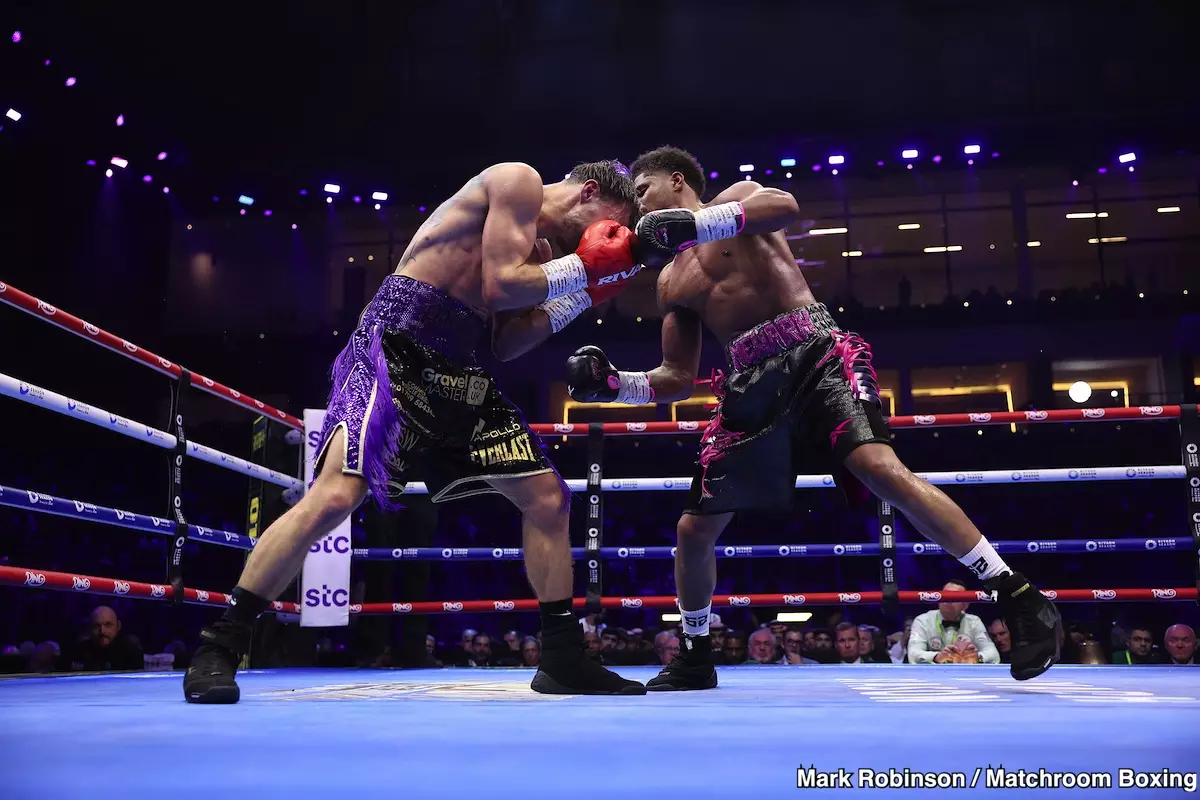In the realm of professional boxing, the significance of an athlete’s performance is often measured not just by their skill set but also by the caliber of their opponents. Shakur Stevenson, the WBC lightweight champion, recently showcased his prowess in a bout against Josh Padley, culminating in a ninth-round technical knockout victory. While fans and analysts alike recognized Stevenson’s skill during the fight, a closer examination raises pertinent questions about both his opposition and the implications of his preparation and strategy.
In the aftermath of his victory, Stevenson proudly claimed to have “barely gotten touched,” a testament to his defensive skills and tactical execution. However, the reality lies heavier on the shoulders of his opponent, Padley, whose credentials appear to demand scrutiny. With limited experience against formidable rivals and only one notable name on his record—Mark Chamberlain—Padley seemed unprepared for the elevation in competition. The disparity in skill and experience was glaringly evident in the ring, making one wonder if this bout truly served as a legitimate test for Stevenson or merely an exercise in maintaining his title.
While Stevenson’s defeat of Padley might bring him short-term accolades, it presents a long-term predicament for his career trajectory. Elite fighters need to consistently prove themselves against quality opponents, and failures in this department can lead to stagnation in a boxer’s development. Promoters like Turki Alalshikh should actively seek to provide Stevenson with more competitive fights that will not only challenge him but also enhance his resume. The boxing community deserves to see Stevenson tested against top-tier talent, which many fans anticipated when he moved up to the lightweight division.
Reflecting on the fight, Stevenson acknowledged that while he could have achieved a quicker stoppage, he was ultimately satisfied with his performance. “I was knocking out the ring rust,” he stated, showing awareness of the need for consistent activity within the sport. However, one must question whether knocking off the proverbial rust against an underwhelming opponent truly counts as preparation for more significant bouts that lie ahead.
Fighter development is a delicate balance between honing skills and facing real challenges. Stevenson, who remains undefeated at 23-0 with 11 knockouts, may find himself under increasing pressure to elevate his level of competition. Critics have begun to suggest that his career has been meticulously curated, leading to beliefs that he has been excessively sheltered. This fear is amplified when one considers the potential risks of facing more formidable adversaries, such as Cuban contender Jadier Herrera, who has a substantial knockout record. By maneuvering around tough opponents, Stevenson risks not only stagnation but alienation from fans eager to see authentic bouts challenge his abilities.
Boxing is not only a display of power and technique; it is also a game of strategy and choices. In Stevenson’s case, even the selection of his opponents can be viewed through a critical lens. He lamented that fighter Floyd Schofield, whom he had handpicked for this bout, withdrew due to illness, referring to it as “a slap in the face.” This raises questions about the strategic planning behind Stevenson’s career. Why select an untested novice instead of pursuing an encounter with an experienced challenger who could truly elevate his status in the sport?
The use of young fighters for the sake of securing victories is a common tactic in boxing, yet it often backfires. Rather than enhancing Stevenson’s reputation, such matches risk reinforcing narratives of avoidance and protectionism. Unfortunately for Stevenson, fans are quick to dissect choices and interpret them as markers of a fighter’s true capabilities. It may well be that his aspirations for greatness dim if he continues down a carefully marked path devoid of real challenges.
As Shakur Stevenson looks ahead, the boxing world will keenly observe how he responds to the scrutiny and the desire for tougher competition. Remaining active in the ring is commendable, but true growth requires stepping outside comfort zones and engaging with formidable opponents who can test his skills. The time has come for Stevenson to push back against the temptation of easy victories and instead embrace the trials that define champions.
Stevenson has the potential to rise to greater heights within boxing, but such aspirations will only be realized through meaningful engagement in the ring. The stakes are becoming higher, and a legacy built on solid foundations of competition and challenge awaits the firebrand champion who dares to embrace it. Ultimately, how Stevenson navigates this turning point in his career holds the promise of determining not only his stature as a champion but his place in boxing history.


Leave a Reply